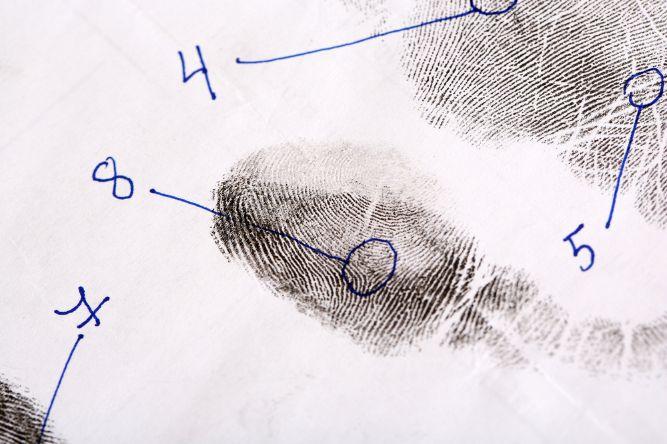
Fingerprints are like snowflakes – each one is completely unique. You’ve probably heard that before, but have you ever stopped to consider the implications? There’s a reason that fingerprints are used for everything from unlocking phones to passing security checks – they’re an identifier that’s totally unique to you.
The field of biometrics is built around identifiers like these. Fingerprints have a lot of advantages – they’re much easier to scan than other unique features, like irises.
With so many different services relying on fingerprints, the thought of losing your fingerprints can be pretty unsettling. On that front, there’s good news and bad news.
Let’s start with the bad news: It can be surprisingly easy to lose your fingerprints. As you’ll soon learn, everything from aging to paperwork can lead to your fingerprints becoming faded and undetectable.
The good news? In most cases, your fingerprints will regenerate after a bit of care.
There’s a lot to explore, and we’ve got our finger on the pulse – so let’s take a look at how you can lose your fingerprints:
How you can lose your fingerprints
Losing fingerprints through labour
Work of all kinds can wear down the ridges of your fingerprints. Bricklayers, for example, rarely have legible fingerprints – the rough edges of the bricks quickly wear down the ridges of their hands. People who work with basic materials (meaning the opposite of acidic, not simple) are also prone to fingerprint wear. Office workers who handle a lot of paper can see their fingerprints worn away, as can musicians.
In other words, if you use your hands regularly, your fingerprints may be quite faded. It can happen to almost anyone.
Losing fingerprints through ailments
Various diseases, infections, and reactions can also cause you to lose your fingerprints. Hand-foot syndrome, a somewhat common side effect of some chemotherapy drugs, can cause blistering and peeling which results in the loss of fingerprints. Rashes can also cause you to lose the ridges that make up your fingerprints. Don’t go picking random plants in Birds Hill Park before coming for a fingerprinting appointment!
Losing fingerprints as you age
As we age, our skin changes – we develop wrinkles, and our skin becomes less elastic and more prone to damage. One of the problems that stems from this is that fingerprints can become much harder to read. The ridges of your fingerprints will become thicker, which means there’s less space between them. That can make fingerprints become an unreadable blur when placed on a scanner, especially if you apply pressure.
Losing fingerprints through injury
You won’t be surprised to learn that you can also lose your fingerprints through injury. Burns are one common way fingerprints become damaged – peeling and blistering, as you already know, can slough away those invaluable ridges. A simple mistake made while cooking can lead to unreadable fingerprints!
Deep cuts, abrasion, and other injuries will also result in lost fingerprints. Have you ever seen a crime movie where they intentionally injure their fingertips in order to hide their fingerprints? The idea isn’t totally based in fiction. There are, however, a few flaws with the premise, as you’ll learn in a brief moment.
Fingerprint loss is rarely permanent
Bad news for would-be mafiosos, but good news for everyone else – you can regenerate your fingerprints. As you already know, skin cells regenerate over time. The skin that regenerates on our fingertips is actually pre-programmed with our fingerprints in it, so once any damage is healed, the same exact fingerprints will appear once again.
The only time fingerprints don’t regenerate is when damage is deep enough to affect the generating layer of skin. Even with this type of damage, however, you can almost always still get your fingerprints scanned, as most of the ridges will still be intact.
How to preserve your fingerprints
While damage is rarely permanent, you’ll still want to avoid damaging your fingerprints before a fingerprinting appointment. We’ve seen a lot of fingerprints in Winnipeg, where blistering cold and scorching heat have caused damaged skin. In these extreme conditions, it can be hard to keep your fingerprints pristine – but we’ve got a few tips to help you.
- Moisturize regularly – just don’t moisturize the day of your fingerprinting appointment.
- Wear sunscreen in the summer – even on your fingertips!
- Wear gloves in the winter.
- Take a break from activities that can damage your fingerprints for as long as possible before your fingerprinting appointment.
- Get digital fingerprints taken instead of traditional ink fingerprinting.
- Don’t wash your hands or use hand sanitizer excessively before an appointment.
Basically, you should aim to treat your fingerprints with care. Damaged fingerprints can be rejected. More often than not, your fingerprinting agency will tell you in advance if your fingerprints aren’t clear enough, so you don’t have to wait for them to be rejected by the agency you’re sending them to. If this happens to you, and the damage isn’t permanent, wait for your fingerprints to regenerate, taking care not to damage them, then try again!
Call FASTCHECK for Fingerprinting Services in Winnipeg
Need to get your fingerprints taken? We can help. We offer fast and accurate fingerprinting services to Winnipeg and the surrounding area.

Recent Comments